Kusshie: Japanese Lake Monster Mystery
Posted by: mystery_man on November 23rd, 2012
What is lurking in the waters of Japan’s Lake Kussharo?
An unknown creature, known affectionately as “Kusshi” in an attempt to emulate Loch Ness’ “Nessie,” has long been sighted in Lake Kussharo, in the nothern island of Hokkaido, Japan.

Lake Kussharo is located within Akan National Park in eastern Hokkaido and derives its name from the Ainu word “Kuccharo,” which means “The place where a lake becomes a river and the river flows out.”

It is a caldera lake, formed in the crater of a volcano long ago, and is notable for being the largest lake of this kind in Japan as well as the 6th largest lake in the country overall.
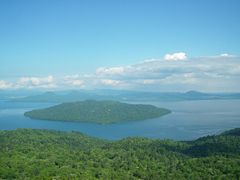

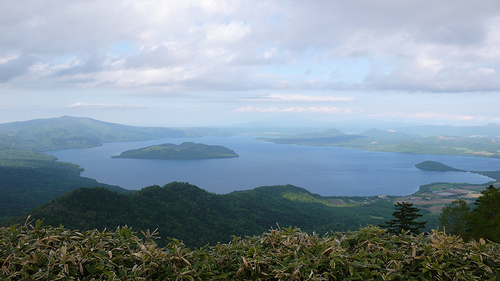
It also boasts the largest island in a freshwater lake in Japan, the islet Nakanoshima, which is in fact a composite volcano. Lake Kussharo is massive for a caldera lake, being approximately 57 km in circumference and reaching depths of 117.5 meters.
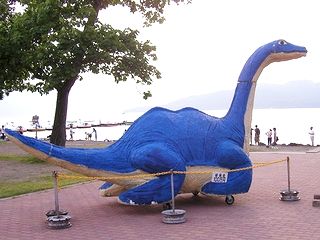
A sculpture of the alleged creature by the lakeside
Kusshi is reported as being between 10 and 20 meters in length (30 to 60 ft), and the most commonly cited coloration is a dark brown. The neck is of a moderate length, and humps are sometimes mentioned. The head of the creature is said to look somewhat like that of a horse, only larger, with silver eyes, and is sometimes described as having two protrusions like giraffe horns on top. A few reports mention the creature making strange grunting or clicking noises. Interestingly, many witnesses report having felt distinctly uneasy, disturbed, or “icky,” upon seeing the creature.
One very interesting characteristic of Kusshi is the high speeds at which it reportedly can move. In 1974 footage was taken of a mysterious creature moving across the lake at breakneck speed. In Sept, 1974, a group of 15 witnesses reported being surprised by a large, somewhat triangular shaped animal with shiny skin like glistening scales, moving under the surface of the water with the speed of a motorboat. In 1988, a Mr. Takashi Murata was riding in a motorboat and reported being paced by a large animal at a distance of 15 meters away, which he described as having a dark back that looked like that of a dolphin. The animal followed him for a time, keeping up with the fast boat, before disappearing beneath the water.
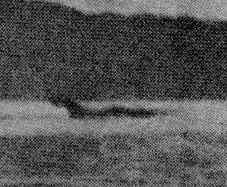
Lake Kussharo’s alleged lake monster first came to widespread publicity during the 1970s due to a number of high profile sightings. In 1972, a man reported seeing an object that looked like a “boat turned upside down,” swimming quickly through the water. In August of 1973, a group of 40 middle school students on a field trip, as well as their teachers, spotted the creature not far from shore. In July, 1974, another famous case was reported by a Mr. Wada, a farmer who sighted a large, dark animal with several humps at intervals of 4 meters apart. The farmer watched the creature for some time before it submerged with a huge swell of water and a splash.
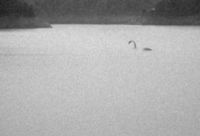
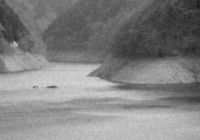
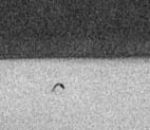
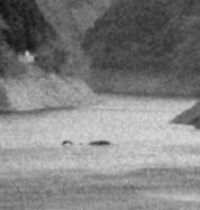
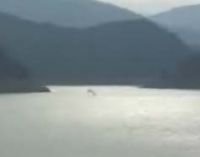
These sightings and many others like them brought attention to the lake, which culminated in an active search for the animal. For one month in Sept 1974, TV crews, boats equipped with fish finder sonar, and teams of divers explored the lake. These efforts produced some interesting results. Some of the sonar equipped boats reported finding large images at depths of 15 to 20 meters and a TV crew from the Hokkaido Broadcasting Company actually managed to catch footage of the alleged creature. Over the years, Kusshi has been photographed and filmed on several occasions, including as recently as 1990.
Kusshi continued to be sighted throughout the 70s and beyond, sometimes by large groups of people. In May, 1976, Kusshi was sighted by a group of 22 tour bus passengers and their driver. As recently as 1997, a group of firefighters spotted a strange animal swimming 100 meters offshore, which they estimated as being 20 meters long, with a dorsal fin and banded markings. Another sightings was made by tourists in 2002, and reports occasionally pop up to this day.
Although media attention made Kusshi famous in the 1970s, it would be a mistake to think that this was the first indication of something strange or unknown in the lake. The Ainu people who inhabit the area have long told of giant snakes that inhabit the lake. Pioneers coming to the area during the Meiji era also told of seeing these creatures, which were said to attack and eat deer whole. These stories have a long tradition among locals in the area. During the 40s and 50s, there were quite a few sightings of Kusshi as well, although these never did gain the attention that the 1970s sightings did.
So what could Kusshi be?
Lake Kussharo is itself not particularly a good habitat for aquatic life. The area is well known for its hot springs and volcanic activity, and volcanic gases bubbling up beneath the surface render the water of the lake highly acidic. In addition, a 1938 eruption in the area created a large amount of sulphur which found its way into the water. The conditions are not ideal for fish. Those that do thrive in the lake are species that are resistant to acidic water conditions, such as the introduced rainbow trout, and most fish in the lake congregate near inflowing streams which dilute the water. This limits the potential food supply and makes conditions difficult for a large animal.
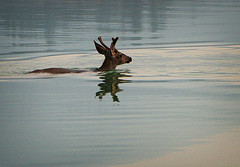
One hypothesis is that swimming deer or other animals are behind the sightings. A swimming deer could perhaps fit in with some aspects of Kusshi reports, especially the general shape and presence of horns sometimes mentioned.
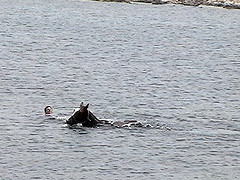
Another idea is that swimming horses could be the culprit. Kusshi’s head is often described as being horse like, and the creature has even been mistaken for a horse on at least one occasion. In July, 1975, a forestry worker saw what he at first thought was a horse swimming in the lake until he noticed that it was much larger than a horse as it came closer. The creature then dove below the surface not to be seen again. Could a horse or deer be behind these reports? It is an interesting idea, but the sizes reported for Kusshi are much larger than these animals and we are still faced with the reports that describe these creatures moving at high speeds.
Some point to the culprit as possibly being misidentified schools of fish such as rainbow trout, sockeye salmon, or Sakhalin taimen (Hutcho perryi), which is found in Hokkaido and is one of the oldest and largest species of salmon. It is something to consider, but would do nothing to explain the head and neck seen in many reports. Still another, more unconventional explanation, is that Kusshi could be some sort of giant slug. Kusshi has been attributed to misidentifications of motorboats as well.
There are those that have even used the surviving plesiosaur theory, and there is even a model of Kusshi found at the lake that most certainly resembles the mainstream “Nessie” image of one. However, this most reports do not really describe the animal in that way, and this speculation seems to be an attempt to liken Kusshi to the popular image of Nessie more than anything else. Even for the Loch Ness Monster, the plesiosaur hypothesis has been largely debunked and abandoned.
This sort of thing has led some people to make the accusation that the lake monster has been played up in order to promote tourism to the area. Indeed, even now the area draws many visitors looking to catch a glimpse of something strange in the lake.
Whatever it is, Kusshi’s identity remains an interesting mystery.
About mystery_man









I think it’s possible that a “Loch Ness Monster” in Hokkaido could exist!! It’s like Alaska, so it wouldn’t surprise me if it really did exist!
Hi Brent,
I do not believe (because this for religion) but i have friends who have seen the so called Loch Ness monster (phenomena would be better) close up and they describe a Plesiosaur like animal, so if it is in Loch Ness, there is no reason it could not be in Japan, Canada et al.
P.S. Thanks for the great article as always.
I love Mystery Man’s posts. I myself have lived in Japan for 14 years, and have travelled to various parts of Japan. Knowledge of cryptids outisde of the kappa is minimal amongst the locals. My feeling from talking to many Japanese about my cryptozoological interest is that the bulk of interesting sightings in the 70s is classic Japanese piggy-back trending, particularly with Hibagon sightings so recently after the Patterson Bigfoot flap. Kusshi and Issie fall into this category, too. Sure, Nessie burst into the news in the 1930s but the Japanese love fads and in particular, each town around the country prides itself on having something ‘famous’. Supernaturally, Japan is a goldmine. Cyptozoologically, other than the islands of Okinawa, nup.